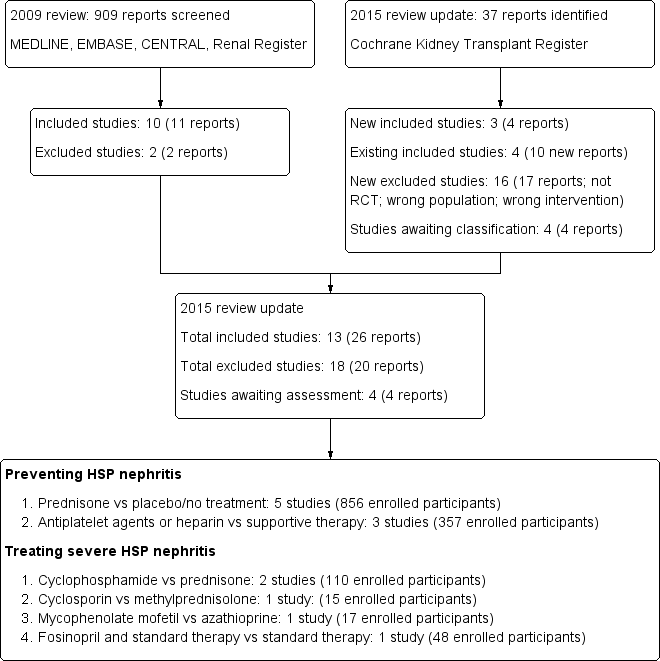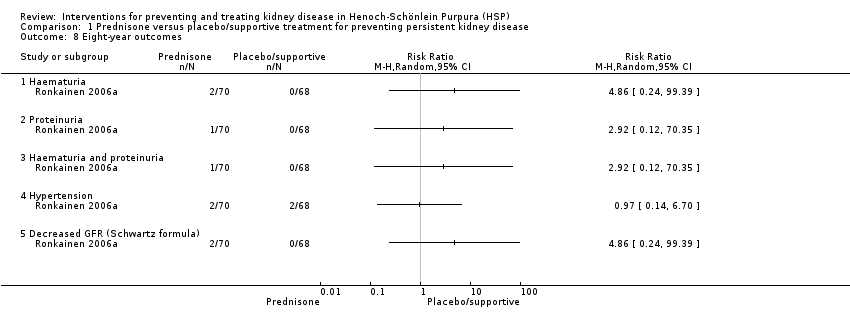Contenido relacionado
Revisiones y protocolos relacionados
Giles D Walters, Narelle S Willis, Tess E Cooper, Jonathan C Craig | 13 enero 2020
Patrizia Natale, Suetonia C Palmer, Marinella Ruospo, Valeria M Saglimbene, Jonathan C Craig, Mariacristina Vecchio, Joshua A Samuels, Donald A Molony, Francesco Paolo Schena, Giovanni FM Strippoli | 12 marzo 2020
Suetonia C Palmer, Edmund YM Chung, David O McGregor, Friederike Bachmann, Giovanni FM Strippoli | 22 octubre 2019
Mariacristina Vecchio, Sankar D Navaneethan, David W Johnson, Giuseppe Lucisano, Giusi Graziano, Valeria Saglimbene, Marinella Ruospo, Marialuisa Querques, Emmanuele A Jannini, Giovanni FM Strippoli | 8 diciembre 2010
Deirdre Hahn, Elisabeth M Hodson, Jonathan C Craig | 28 febrero 2023
Penny Hill, Nicholas B Cross, A Nicholas R Barnett, Suetonia C Palmer, Angela C Webster | 11 enero 2017
Vignesh Surianarayanana, Thomas J Hoather, Samuel J Tingle, Emily R Thompson, John Hanley, Colin H Wilson | 15 marzo 2021
Joaquin Escribano, Albert Balaguer, Filomena Pagone, Albert Feliu, Marta Roqué i Figuls | 21 enero 2009
Marinella Ruospo, Valeria M Saglimbene, Suetonia C Palmer, Salvatore De Cosmo, Antonio Pacilli, Olga Lamacchia, Mauro Cignarelli, Paola Fioretto, Mariacristina Vecchio, Jonathan C Craig, Giovanni FM Strippoli | 8 junio 2017
Davide Bolignano, Suetonia C Palmer, Marinella Ruospo, Carmine Zoccali, Jonathan C Craig, Giovanni FM Strippoli | 14 julio 2015




























